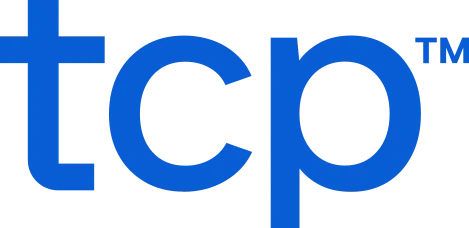Most employers only realize they have a scheduling problem when people start quitting. By then, it’s too late.
How you schedule employees — when they work, how often, and how predictably — plays a critical role in whether they stay at your company or start looking for something better. Sure, insufficient pay and perks can lead to high turnover. But sometimes, it’s simply about stability.
In industries like healthcare, retail, hospitality, public safety, construction, and manufacturing, poor employee scheduling practices are one of the fastest ways to burn out good employees. These problems show up in many forms: unpredictability, unfair shift assignments, missed compliance requirements, disengagement, you name it.
In this article, we’ll break down exactly how employee scheduling and retention are connected, plus how to create an employee scheduling process that helps reduce employee turnover.
What is employee scheduling?
Employee scheduling, as an idea, is the process of assigning shifts and hours. But in practice, it’s about managing time, workload, and expectations to align with operational needs and human lives.
Almost anybody can fill slots on a timesheet. But effective employee scheduling is about creating a structure that employees can rely on. The right schedule builds trust, protects work-life balance, and keeps teams productive without burning them out — all of which directly impact employee retention.
Key aspects of employee scheduling:
- Assigning shift times, locations, and roles
- Balancing coverage needs with employee availability
- Communicating schedule changes quickly and clearly
- Coordinating with labor laws, union rules, and internal policies
When scheduling is inconsistent or last-minute, it sends the message that people’s time is expendable. And that message, communicated over time, is what drives them to leave.
Why employee scheduling is more than just logistics
Calendars ≠ schedules.
A schedule is different because it sets expectations and signals how much you value people’s time, not just where that time is going. Fair, predictable, balanced schedules make employees feel respected. But when they’re chaotic or inequitable, people start checking job boards.
The stakes are highest across frontline industries. A 2023 study found that nearly 50% of frontline workers changed jobs in 2023, with poor work-life balance and a lack of shift scheduling flexibility being significant factors. The study also revealed that 50% of frontline workers are actively ready to quit their jobs in search of a better experience.
Poor scheduling practices can:
- Disrupt employees’ personal lives and responsibilities
- Lead to frequent no-shows and last-minute callouts
- Increase burnout, especially in understaffed teams
In sectors like healthcare and public safety, erratic schedules go beyond frustration, directly impacting patient outcomes or response time.
A systematic review published in BMC Health Services Research found that long or irregular shifts for nurses are linked to higher rates of errors and worse patient outcomes. The study concluded that poor scheduling increases fatigue and stress, directly impacting care quality and employee well-being.
But healthcare workers aren’t the only group at risk. A seven-year analysis of the Salt Lake City Police Department found that staffing levels had a more substantial effect on emergency response times than factors like call volume.
The potential consequences are real, not just for employees but for the people they serve. So how exactly do specific scheduling habits push employees out the door?
How bad scheduling impacts your people
Scheduling mistakes don’t just create tension. They drive people out. Employees may not always complain about bad schedules, but they’ll quietly plan their exit if the pattern continues. This makes employee scheduling and retention an inseparable issue for most organizations.
Here, we’ll examine why scheduling isn’t just an operational task but a driver of culture and employee loyalty.
Inconsistent schedules breed distrust
If an employee’s work schedule changes every week, or even every day, they begin to feel like their time isn’t valuable to the organization.
When employees can’t rely on their schedule, everything else becomes harder. It impacts their ability to plan childcare, manage second jobs, get enough rest, or handle emergencies. The pressure of unpredictability adds up, hurting trust in the company and its leadership, often resulting in quiet quitting or fast resignations.
In retail and hospitality, where scheduling often shifts last minute, the impact is severe. A McKinsey report found that frontline retail workers face annual turnover rates of at least 60%, with inconsistent scheduling being a significant contributor.
Poor shift distribution causes resentment
Scheduling isn’t just about when people work, but how often, how fairly, and how equitably certain people work. If someone is repeatedly stuck with undesirable shift schedules — like weekends or overnights — while others avoid them, frustration and resentment build quickly.
In healthcare, this issue is especially damaging. The national turnover rate for registered nurses is around 22.5%, with inequitable shift assignments contributing to dissatisfaction. The result? Lower morale and weakened employee retention.
Lack of input or flexibility signals disrespect
When employees don’t have any influence over their schedules, they often feel overlooked or undervalued. Today’s workforce expects more control over their time, especially younger employees who value autonomy and work-life fit.
Flexibility is more than a flashy perk, too. A workplace report noted that providing employees with real-time access to their schedules and involving them in shift planning improved work-life balance and reduced turnover.
With all of these people problems caused by bad scheduling, the negative outcomes start trickling up to your organization as a whole.
How bad scheduling impacts your organization
When scheduling goes wrong, the ripple effect can reach every part of your organization. From morale to performance and even legal risk, broken scheduling systems leave people frustrated and leadership overwhelmed.
This isn’t just a challenge in one industry. In construction, inconsistent scheduling creates burnout and project delays. In healthcare, over-scheduling increases fatigue and medical risk. In retail, last-minute changes make coverage unreliable.
Whether it’s a shift-driven business or a field-based workforce, disordered employee scheduling creates costly problems and undermines employee retention. Let’s explore what happens when scheduling systems are disorganized at scale.
Morale and engagement take a hit
Missed breaks, long stretches without time off or PTO, or short turnarounds between shifts can wear people down quickly. Employees in hospitality, healthcare, and manufacturing are especially vulnerable. The most reliable workers are often overused and underappreciated when staffing is thin.
According to Gallup’s State of the Global Workplace Report, only 23% of workers globally are engaged at work. One key contributor to disengagement is the lack of structure in day-to-day operations, especially around scheduling.
Operational inefficiency creates friction
Missed shifts, overbooking, and reactive schedule changes cost time, erode trust, and increase stress. These problems are magnified in roles like EMT, warehouse operations, and public safety dispatch, where employee awareness is critical.
Hiring woes
Inefficiencies are a red flag not just for your current employees, but your potential ones too.
According to the Workforce Survey Analysis by the Associated General Contractors of America, 85% of construction firms reported having open positions. Among those, 88% were struggling to fill at least some roles, particularly in the craft workforce. Scheduling instability, mandatory overtime, and inconsistent hours were cited as key concerns.
Compliance risk increases turnover risk
Bad schedules also open the door to compliance violations. Your organization could be at risk if your schedule:
- Ignores required breaks
- Pushes too many back-to-back shifts
- Violates local labor laws
Retailers, restaurants, and hospitals have all faced lawsuits, fines, and mass resignations tied to scheduling abuse. Protecting your people starts with protecting their time.
Among the risks of bad scheduling, employee turnover is the greatest. Let’s explore some of the specific scheduling hiccups that contribute to turnover risk.
Common scheduling mistakes that increase employee turnover
Even well-intentioned managers can unknowingly cause churn by using outdated, inconsistent, or unfair scheduling practices. Over time, these issues chip away at trust, morale, and engagement, leading to employee retention problems.
Here are some of the most common mistakes that quietly lead to employee turnover:
Posting schedules too late
If you didn’t know when you’re supposed to be working, it would stress you out. Your employees are the same. Schedule timing interferes with everything from childcare to medical appointments.
Late schedules can quickly go from inconvenience to turnover. According to The Shift Project, more than half of service-sector workers say they get less than one week’s notice of their schedule. That’s a severe burden, especially for workers juggling multiple jobs.
Ignoring time-off requests
Nothing erodes trust faster than a manager who approves time off, then schedules over it. It’s effectively scheduling hypocrisy. When people have to fight to protect their personal time, they start looking elsewhere.
This mistake is especially common in fast-moving sectors like food service, retail, and logistics, where scheduling is reactive. But taking a few minutes to document and honor requests builds long-term loyalty.
Favoritism and uneven shift distribution
When the same employees always get weekend after weekend off or avoid closing shifts, others start to notice. Uneven scheduling breeds resentment, even in tight-knit teams.
Employees will feel the impact of inconsistent scheduling balances long before management sees it, especially if your scheduling tool or process doesn’t flag imbalances.
Failing to account for burnout
A schedule can look “fair” on paper but still be unsustainable in practice. Back-to-back doubles, six-day weeks, or long overnight stretches might check the operational boxes, but they burn people out fast.
In industries like healthcare, warehousing, and hospitality, fatigue leads to mistakes, absenteeism, and eventually, resignation. Long-term retention depends on building rest and recovery into your scheduling rhythm.
With all of these potential mistakes, you might be wondering what a good employee scheduling process is like? We’ll show you how to build a strong, well-run scheduling process and how to use it to build loyalty, instead of pushing employees away.
How to refine your employee scheduling process to improve employee retention
“More money” isn’t the end-all, be-all of employee retention. If you’ve made it this far, you realize how impactful scheduling can be on your employees. But good scheduling doesn’t mean giving up control.
The way you manage your team’s time tells them what kind of employer you are. Strong scheduling habits are one of the clearest ways to communicate fairness, respect, and long-term opportunity.
While this should come as no surprise, simply doing the inverse of the mistakes we’ve covered will help you improve retention through scheduling. So, here are three core traits of any well-built employee scheduling strategy.
1. Predictability (builds loyalty)
When employees have consistent schedules, they can plan ahead. Predictability gives people peace of mind and more reason to stay, whether it’s arranging childcare, commuting, or balancing a second job.
According to the Shift Project, two-thirds of retail and food service workers receive less than two weeks’ notice of their schedule, and 75% say they want more stability. The more advanced notice they get, the more likely they are to stay long term.
2. Fairness (fosters trust)
Fair scheduling means no one consistently gets stuck with the worst shifts. It also means managers listen to requests, rotate equitably, and don’t play favorites. That transparency creates loyalty and keeps teams more unified.
This is especially important in shift-heavy roles across hospitality, emergency response, and food service.
3. Flexibility (meets expectations)
You’re tired of hearing “the pandemic changed everything” when it comes to work mentality. But at the very least, modern employees want options and they’re willing to go new places to find it if you can’t provide it.
Whether it’s shift swapping, compressed schedules, or part-time availability, flexibility helps you attract and retain high performers.
An SHRM report found that 24% of HR professionals identified lack of schedule flexibility as a significant challenge in acquiring talent. This highlights the growing importance of flexible scheduling in employee retention strategies.
So, how do you put these scheduling tenets into action?
How to make scheduling an employee retention tool
In seeing all the potential effects of poor employee scheduling, it may seem like you’re one step away messing it all up. But if you’re struggling with turnover, scheduling is actually one of the first places to look and easiest to improve.
With the right approach, it doesn’t have to be intimidating — you can turn scheduling into a tool for retention, rather than a cause of burnout.
Here’s how to make your scheduling process a reason people stay:
Audit your scheduling patterns
Take a hard look at who’s getting which shifts, how far in advance schedules are posted, and whether certain employees are overburdened. Look for patterns that may be unintentional but harmful.
Use data, not guesswork. If you’re using a digital scheduling system, pull reports that show shift coverage trends, overtime frequency, and time-off approval rates.
Ask employees what they need
Not all data, however, has to be quantitative. If you ask, your workforce will tell you what’s working and what isn’t. Whether through surveys, 1:1s, or anonymous feedback tools, open the door for input on scheduling policies.
And don’t just ask, act on it. When employees see their feedback reflected in the schedule, it builds trust and signals respect.
Treat time as a currency of respect
Time is personal. When you give employees consistent, fair schedules, you show them that you value their time, not just their output. This sense of respect can be just as powerful as a raise or promotion when it comes to employee retention.
Small changes in your employee scheduling strategy can significantly improve team loyalty. All it takes is the willingness to look at your process from the employee’s perspective.
Use flexible tools, not manual fixes
Manual scheduling often leads to errors, bias, and confusion.
Modern employee scheduling platforms allow for rule-based fairness, real-time visibility, and employee input. For you, they reduce the short-term headaches that come with scheduling, but also the long-term migraine of mitigating turnover, all by making scheduling more transparent and collaborative.
Bonus: Automation frees managers up to focus on coaching and culture instead of constant shift adjustments.
Good employee scheduling keeps good people
It’s not hard to see the connection between employee scheduling and retention. The next step is applying that knowledge for your teams.
High turnover, rising burnout, and scheduling complaints often point to deeper structural issues. When employees feel like their time doesn’t matter, they look for jobs where it does.
If employee scheduling creates more problems than it solves, it may be the right moment to explore employee scheduling tools that prioritize fairness, transparency, and real-time flexibility.
If you want to keep good employees, start with their schedules.
TCP Software’s employee scheduling, time, and attendance solutions are flexible and scalable to accommodate your organization and employees as you grow.
From TimeClock Plus, which automates even the most complex payroll calculations and leave management requests, to Humanity Schedule for dynamic employee scheduling that saves you time and money, we have everything you need to meet your organization’s needs, no matter how unique.
Plus, with Aladtec, we offer 24/7 public safety scheduling solutions for your hometown heroes.
Ready to learn how TCP Software takes the pain out of employee scheduling and time tracking? Speak with an expert today.



